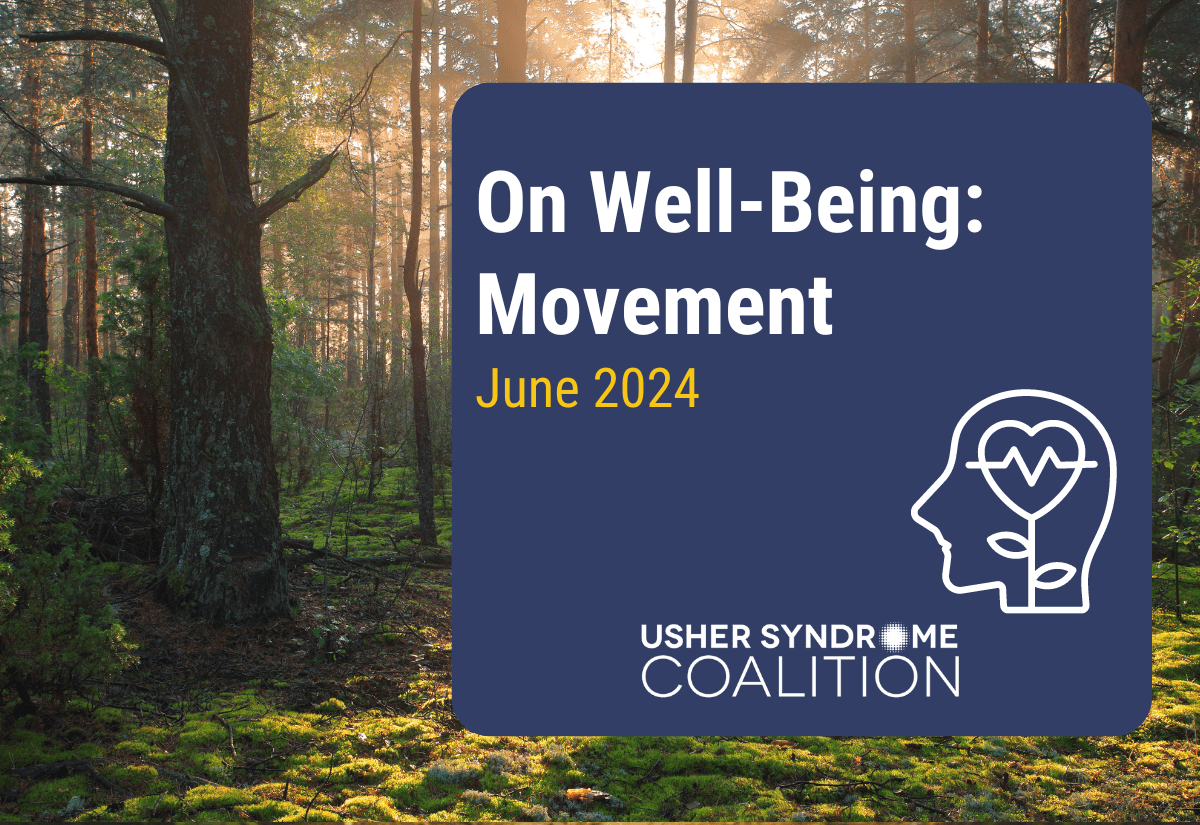
Hopefully, you are aware of the benefits of movement - how exercise is good for staying healthy, good for mental health, building community and self-esteem (Caretti et al. 2022). Maybe you feel limited, or unsure about how to make community sports or going to the gym more “Usher syndrome friendly.”
Jessalyn Akerman-Frank is a certified and trained Deaf yoga teacher who created a deafblind yoga class during the pandemic with adaptations, including “using ‘signs’ that represented the movement, props for tactile focus, and visualization techniques along with the sense of touch to maximize the experience.”
Going to the gym or a fitness class with a friend may help alleviate some of the anxiety of being in a dark, unfamiliar place. Working with the coaches to explain your hearing/vision needs helps them to better understand and make modifications that work for you. Using your cane, if you have one, can help you navigate spaces. Once you’re set up on a machine, it’s a great time to connect with yourself and be present in your body. Transitions may be challenging - it’s possible to have a system where the coach or instructor stands close to you while speaking or taps you on the shoulder to let you know. This can help you fully immerse in the group fitness experience.
Other activities like swimming can be enjoyable, whether you have waterproof hearing aids/cochlear implants, or you take them out to enjoy the silence. In a swimming pool, you can use the ropes separating each lane to guide you.
The loss of both hearing and vision can be disorienting for many reasons. Usher syndrome also affects postural stability - the ability to control the body's position in space to maintain balance and move - due to vision loss, and more so with vestibular dysfunction (Caldani et al. 2017).
A study in 2015 demonstrated the potential for a certain type of yoga to help visually impaired individuals develop somatosensory and vestibular responses, optimizing postural stability (Jeter et al., 2015).
Whatever your reason for prioritizing movement in your life, here are a few tips to help you feel more confident getting started:
- Be patient with yourself- doing new things is hard and scary. It WILL get easier with time.
- Don’t be afraid of being uncomfortable- learn to laugh as you grow through the challenges.
- Use your mobility & accessibility devices when possible and helpful.
- Allow for clear communication before, during and after the activity to allow for feedback and ensure that your particular needs are being met.
- Check out this document for more information.
How do you plan to move your body for mental health?
References:
Carretti G, Mirandola D, Sgambati E, Manetti M, Marini M. Survey on Psychological Well-Being and Quality of Life in Visually Impaired Individuals: Dancesport vs. Other Sound Input-Based Sports. Int J Environ Res Public Health. 2022;19(8):4438. Published 2022 Apr 7. doi:10.3390/ijerph19084438
Cavallo A, Ansuini C, Gori M, Tinti C, Tonelli A, Becchio C. Anticipatory action planning in blind and sighted individuals. Sci Rep. 2017;7:44617. Published 2017 Mar 17. doi:10.1038/srep44617
Rogge AK, Hamacher D, Cappagli G, et al. Balance, gait, and navigation performance are related to physical exercise in blind and visually impaired children and adolescents. Exp Brain Res. 2021;239(4):1111-1123. doi:10.1007/s00221-021-06038-3
Caldani S, Bucci MP, Tisné M, Audo I, Van Den Abbeele T, Wiener-Vacher S. Postural Instability in Subjects With Usher Syndrome. Front Neurol. 2019;10:830. Published 2019 Aug 8. doi:10.3389/fneur.2019.00830
Jeter PE, Haaz Moonaz S, Bittner AK, Dagnelie G. Ashtanga-Based Yoga Therapy Increases the Sensory Contribution to Postural Stability in Visually-Impaired Persons at Risk for Falls as Measured by the Wii Balance Board: A Pilot Randomized Controlled Trial. PLoS One. 2015;10(6):e0129646. Published 2015 Jun 24. doi:10.1371/journal.pone.0129646







